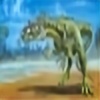HOME | DD
 EvolutionsVoid — Alpine Killer
EvolutionsVoid — Alpine Killer

#alpine #bug #creature #insect #monster #mountain #wasp #velvetant
Published: 2022-03-05 20:22:38 +0000 UTC; Views: 5902; Favourites: 100; Downloads: 0
Redirect to original
Description
Folk who have read some of my work before should already know what is coming here. You all know how Chlora feels about names like "Pig Dragon" and "Savanna Devil." So what are my thoughts on a species that is called "Alpine Killer?" Well, honestly, my mind isn't lingering on that name, it is more focused on the utter idiot who coined it. If I had been on that mountain the same time they were up there developing that title, the name "Alpine Killer" would have gone to something else entirely. Why do people do this? Who lets these people into our field? When you work in the realm of discovering new species and researching everything about them, I would assume that comes with a love for other living things. A passion for finding and learning, an eagerness to show the world the majesty of nature! So why would some knot headed fool think that "Alpine Killer" was a good name to go with? What benefit does it have? The only helpful thing about it is that it at least mentions where they live, but that is all! "Alpine Killer," what a butchery of words! Well, I best get onto actually talking about them. I already know this section is going to get cut.
The horribly named Alpine Killers are large, flightless insects that can be found in mountainous areas. Up upon the rocky hills and snowy peaks they climb and hunt. Many folk look at these creatures and instantly assume that they are related to ants, which is technically true! They do have some relations to ants, but those are not their closest relatives! Further study has found them to be more related to wasps! Rather surprising, which probably comes from their lack of wings. High up in the mountains where the wind howls and the storms rage, flying can be a bit risky. True, there are winged species that brave these conditions, but the Alpine Killers have chosen to not bother with it. They have lost their wings as a result, but they didn't get rid of everything. Dissections of dead specimens have shown that they still retain a good amount of flight muscle inside their bodies, but they aren't used for flying. Instead these muscles have been given a new role: making heat! If you have ever shivered in the cold before, then you know how they work! These muscles go through rapid movement to help produce heat to warm their body, one of the ways they survive the cold climate. The other way they endure the snow and frost is with their thick fur, which helps keep in that heat they generate. Able to live through this chill, they skitter and climb across the mountains with their clawed legs, which are excellent at gripping the stony or icy surfaces! Since they have six legs, they are incredible climbers and are able to traverse any obstacle in their path. There are few places prey can run, as the Alpine Killer scrabbles up cliffs and steep slopes with ease!
Unfortunately, the name "Alpine Killer" gives away the fact that they are carnivores, though it really shouldn't. Yeah, meat eaters are considered killers since they have to kill prey to live, but the word "killer" always felt like one that should be used on individuals who cause unnecessary death. You wouldn't call a cow farmer a killer, or a hunter looking to put food on the table, so why label carnivores that? In truth, that word is more fitting for certain herbivores! They don't eat meat, but they have certainly put some folk in the ground regardless! I would be more inclined to use the word "killer" around a Khalkotauroi then one of these creatures, as those bulls will smear you across the savanna if you sneeze too loud! I am getting off subject again, whoops! Anyways, Alpine Killers are indeed carnivores, hunting for prey upon these frigid slopes. They are not ambush predators, rather they stalk their food and strike when the moment is right. In such a landscape, animals can be quite scarce or hard to find, so the Alpine Killer needs a way to spot them. Their huge eyes are how they locate prey, as they climb up high and survey the mountainside for any traces of life. Their vision is quite impressive, as they can pick out small scurrying mammals from all the rocks and snow! They also look out for mountain goats and other high altitude grazers. Once they spot an ideal target, they silently crawl across the mountain to get close to them. This process can take awhile, as they not only locate prey from very far away, but they make sure to move in such a slow methodical manner that they don't spook their target before they arrive. Travelers who come across Alipine Killers will often see them stalking across the slope with full focus, but they rarely ever see the insect's target. This is because the prey is practically miles away, and the Alpine Killer is being very careful in its approach.
When it does finally close in on its prey, it keeps its body low and hides itself amongst the rocks. It is looking for an opening, but what that is depends on the target. For smaller mammals, like hares or pikas, the Alpine Killer is waiting for them to move towards shelter. Burrows or piles of rocks often seem like sanctuary for these creatures, and this insect is counting on that. When the critter gets near a hiding place, the Killer will make itself known and spring into action. Faced with a sudden threat, these mammals are practically guaranteed to dive into cover, hiding in a place where the large predator cannot fit. It is true that the Alpine Killer cannot squeeze into these burrows, but it doesn't have to! This species possesses an incredibly long and flexible stinger, one they can manipulate with surprising dexterity. With the prey hiding within, the hunter will extend this stinger and send it down after its target. Armed with a barbed tip and agonizing venom, it goes down like a bendy harpoon and spears its victim. Debilitated by pain and skewered, the prey can do little as it is dragged back to the surface and into the waiting jaws.
For larger prey, like mountain goats, the Alpine Killer is waiting for them to position themselves on a steep surface or long drop. With incredible gripping hooves, the goats of these regions can climb cliffs with ease and can seemingly stand on sheer rock face! This is good for reaching vegetation or escaping predators, but it offers no salvation from the Alpine Killers. When the goat is climbing up such a steep area, it cannot easily run away, lest it slip and fall. This allows the Alpine Killer to give chase, as they would lose in a straight race with the goat, but would beat them thoroughly at a climbing competition. With the target exposed on the cliff or slope, the Killer charges and begins its attack. If the Alpine Killer is above the goat, it will drop down with its mighty mandibles and take them by the neck. The razor spikes lining this jaw will pierce the throat and bring a swift death, then it will use its legs and strong jaws to haul its catch to an easier dining spot. If it is attacking from below or the side, it will rely on its stinger. It will climb close enough for it to whip out this weapon and stab the scrambling goat. The painful venom will shock the muscles of the prey, inevitably leading to a slip and fall. Unable to maintain their precarious perch, the goat will plunge to its death and the insect will climb down to collect the remains. Even if the goat is able to hold itself and keep from falling, the stinger or jaws will arrive to forcibly drag them off the slope. Two interesting methods, but one inevitable outcome. Which would you prefer? A quick blade through the throat or a long fall to your death? Which would I choose? I'm asking you, silly!
With these hunting tactics and a fierce appearance, some idiot may think the name "Alpine Killer" is a good fit. I disagree, but who cares what I think? The name has stuck regardless, even though casualties at the jaws of these beasts are incredibly rare. Turns out, when you live high up on dangerous slopes where the weather is freezing and terrifying, not a lot of people will come up to visit you! Since few people really enter these territories for long, the interactions between civilization and mountain insect are quite limited. This is also why information and research on them is scarce, as it is a bit difficult studying them. They are predators that stay out of sight and move silently, so good luck spotting them! They also have great vision, so they will see you coming from a mile away and be long gone by the time you get to them. Believe me! I have heard enough stories of failed trips to know not to bother with an expedition for this species. Rather, I just find another animal that lives in their territory and study them instead! If I happen to see an Alpine Killer during that trip, then it is an added bonus! If I don't, and I usually don't, I still have a reason to be up there freezing my roots off! What a genius tactic! Maybe if this species moves somewhere warmer, I will put in some more effort!
Chlora Myron
Dryad Natural Historian
---------------------------------------------
I did warn you guys about the mountain wasps, now look where we are! Just because they don't have wings doesn't mean they can't be high up!
Related content
Comments: 7

👍: 0 ⏩: 1

👍: 0 ⏩: 0

👍: 0 ⏩: 1

👍: 1 ⏩: 0

👍: 0 ⏩: 1

👍: 0 ⏩: 0

👍: 0 ⏩: 0

















